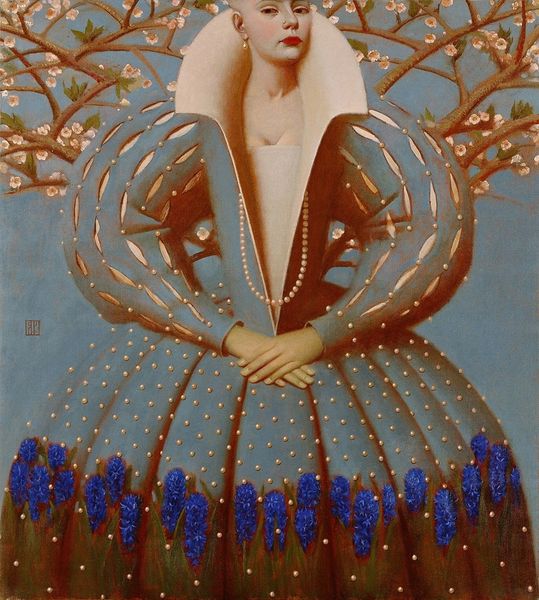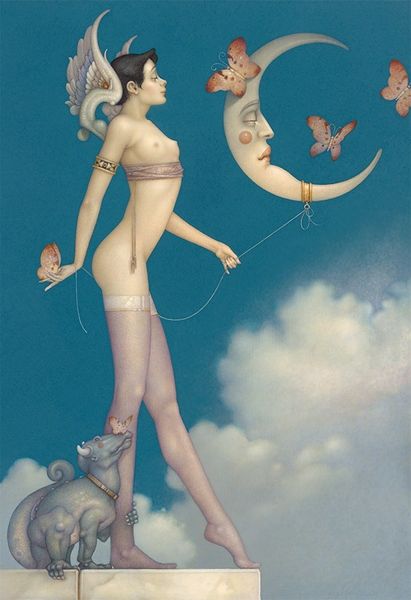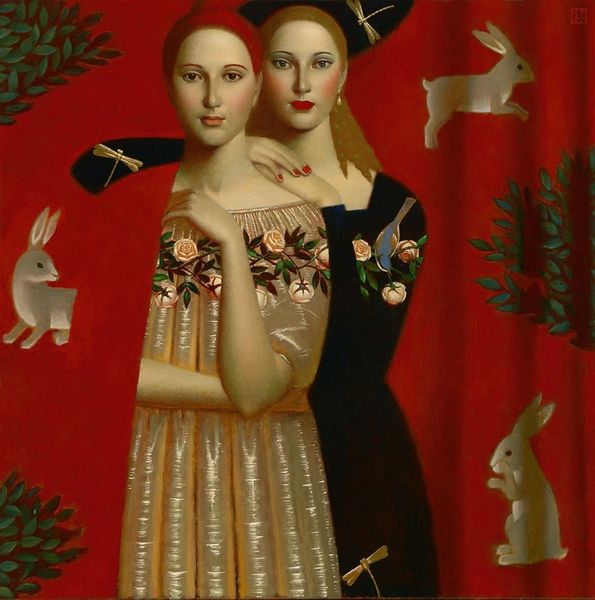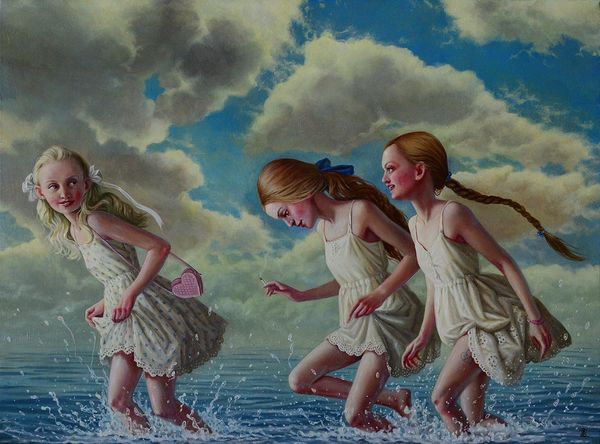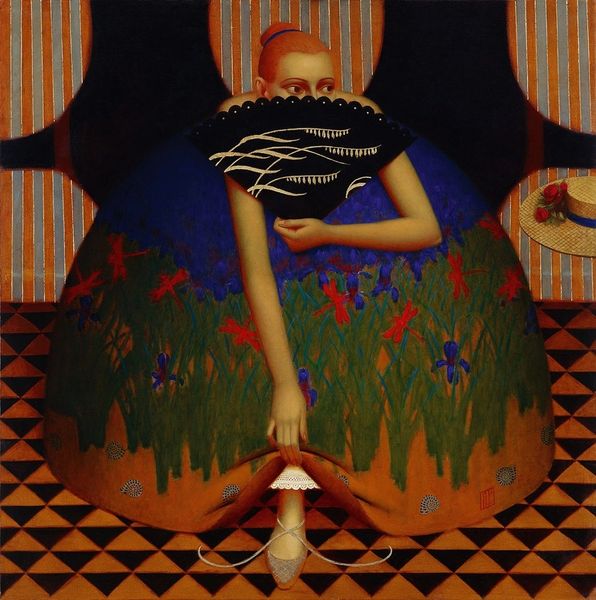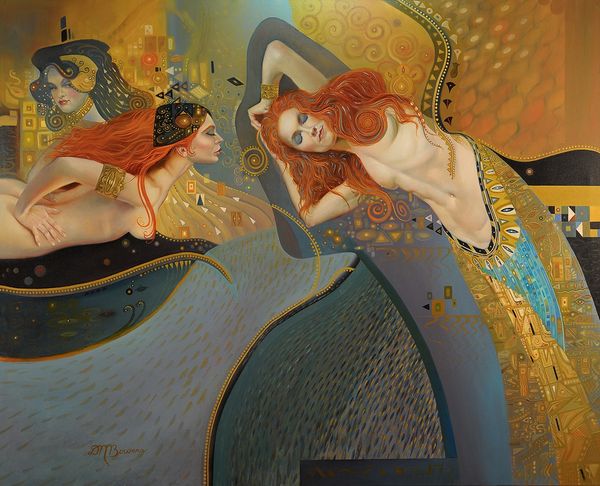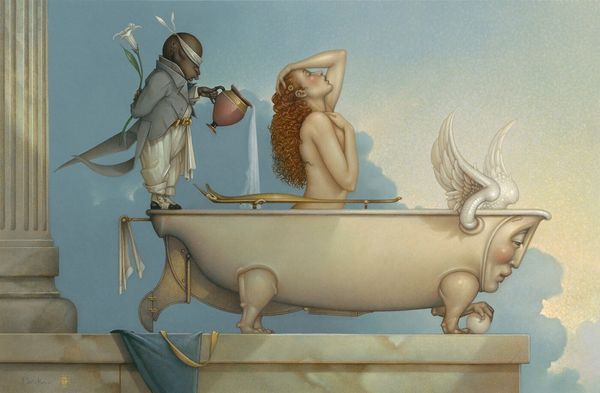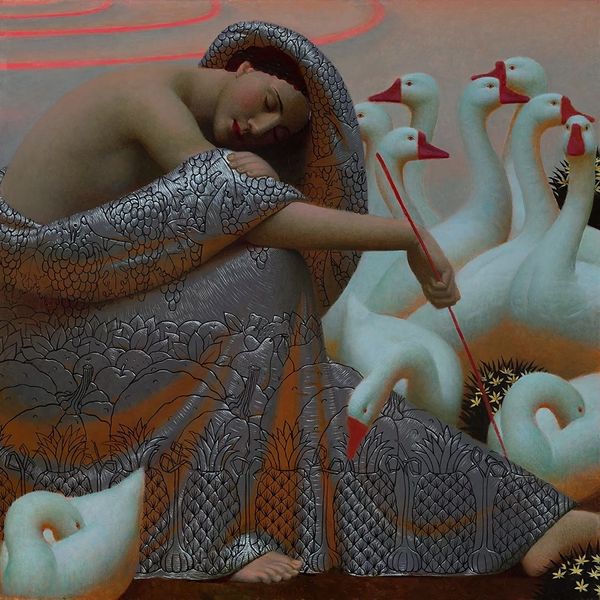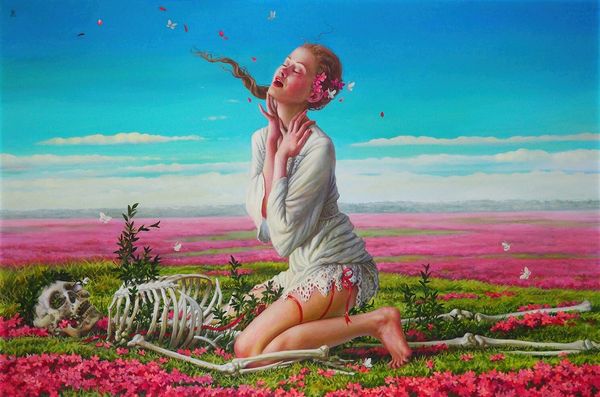
Copyright: Modern Artists: Artvee
Editor: This is Andrey Remnev’s "Swan Lake," created in 2008 using oil paint. The figures holding hands, the repetition, it gives the painting a really dreamlike, almost surreal quality. What stands out to you about this piece? Curator: Well, for me, it's all about the materiality of the painting. The oil paint itself allows Remnev to create those luminous blues in the dresses and the soft textures of the swan’s feathers. But beyond the aesthetic, I'm interested in how the painting as an object participates in a cycle of value. The labor involved, the cost of materials, the gallery representation – all contribute to its status as art. What about the dragonflies on their dresses? Editor: It is quite whimsical, right? The whole image is odd to me, it looks romantic yet distant. What can you make of it? Curator: Right, because there is so much at play in the materials and composition. Think about how art history elevates oil painting as a ‘fine art’ medium versus other forms of craft. Even the canvas support plays a role. And Remnev is consciously playing with that history by deploying these idealized, almost doll-like figures, questioning traditional notions of beauty and artistic skill through these materials and production processes. It also reminds of "Les Demoiselles d'Avignon" but much more approachable for a public. Don't you agree? Editor: I see what you mean. I never really considered how much the materials themselves contribute to the meaning. That’s a cool perspective. Curator: Precisely. So much of our experience with art is filtered through this lens of value and labor, and focusing on the material realities of a work like "Swan Lake" can reveal some really interesting insights about our relationship to art itself. Editor: This has definitely changed how I see it, thanks!
Comments
No comments
Be the first to comment and join the conversation on the ultimate creative platform.
